
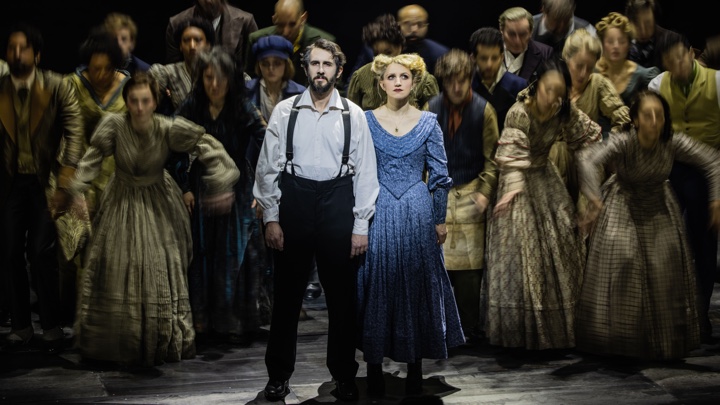
David Fox: My first Sweeney Todd was the Los Angeles incarnation of that original production. Angela Lansbury was then paired with George Hearn as Sweeney, along with a few other post-Broadway cast changes, including Cris Groenendaall as Anthony and Betsy Joslyn as Johanna. Shocking as this now sounds, demand was low, with the result that my student ticket—probably under $10—was in the front and center orchestra. Having by then seen national tours of all the Stephen Sondheim and Prince shows, I was already a fan, but by 1982 for Sweeney, I was also a full-fledged adult and better equipped to understand their work. Other Sondheim/Prince shows have meant more to me—Follies especially; also Company. But there was no doubting the brilliance of Sweeney. Of course, I was dazzled by Sondheim’s writing and by Lansbury, but also by Prince’s direction. He had mounted this Victorian melodrama within a Brechtian frame, thereby sharpening the social inequities underlying the murderous rampage. Happily, a performance in this run was filmed and telecast, so I can revisit it and check my memories!
CK: I first discovered the material through that very telecast, and I’d hoped that Kail’s maximalist conception would recall the glories of Prince’s conception. Yet while the result on stage at the Lunt-Fontanne Theatre is often gripping and exciting, it loses the stirring sense of social commentary that is so finely etched into the fabric of the original. Like a great chef seasoning a beautiful piece of meat, Prince drew out the flavors already embedded within Sondheim and Hugh Wheeler’s tale of a wronged barber who seeks revenge on “the privileged few” who make sport of the lower classes. I consider it a continuation of what Prince did in his original production of Cabaret, where he cast in stark relief the murderous impulses beneath the polite veneer of German society. But Kail mostly settles for giving his audience a good time. There’s nothing wrong with that, but it lacks a certain complexity. It’s the difference between a cheeseburger and chateaubriand.
DF: I don’t disagree with that assessment—and more on that later—but to extend your metaphor, this would be the Daniel Boulud of cheeseburgers. There are certainly many ways to approach Sweeney, and since its debut, the show has been widely revived in productions that run a huge stylistic gamut. I’ve seen a number of them, including some by opera companies. Sweeney is as close to opera as Sondheim ever got, but I haven’t generally found that approach satisfying. Though the vocal writing for Sweeney Todd himself suits an operatic baritone or even bass-baritone, especially in “Epiphany,” the other characters are a more mixed bag, and Mrs. Lovett specifically leans into British music hall. I’d go further and say that a stylistic musical clash between Todd and Lovett emphasizes a key plot point. Yes, the two ultimately become a sexual couple (well, she puts the moves on him—it’s less clear how Todd feels), but I wouldn’t call it a romantic relationship. I see it instead as fundamentally transactional. Each can facilitate something that the other wants, which is how two very different people become a lethal folie a deux.
CK: The original Sweeney, Len Cariou, was no opera singer; his replacement, Hearn, comes closer, but ultimately he’s a Broadway baritone in the tradition of Alfred Drake. I’d say I’ve been disappointed with operatic Sweeneys like Mark Delavan or Bryn Terfel who sacrifice the emotionality embedded in the music for beautiful tone. I take your point, though, about the importance of vocal contrast.
DF: Ashford and Groban are two theater singers cut from similar cloth. He is a leaner and more tenorial Todd than one usually hears, though it is a superbly sung performance of real tonal beauty, crystalline diction, and exceptional musicality. She has similar virtues, with a timbre that can incorporate some soprano color but is more naturally placed in a high mixed voice. It’s lovely to hear them together, but frankly I’d prefer a sharper contrast.
CK: Groban’s voice is an astonishing instrument—full stop. But there is very little in his timbre or delivery to suggest Sweeney’s internal struggles or unquenchable bloodlust. Although he sings the score perhaps as well as anyone I’ve ever heard, I missed a certain richness and emotionality in the music.
DF: Individually too, Groban and Ashford don’t hit quite the dramatic notes I want, though they are often wonderful. He lacks the darkness and torrential rage that Sweeney ultimately needs, though on the other end of the spectrum, Groban’s charm goes a long way when we need to root for him (as we do). To her credit, Ashford has truly made Mrs. Lovett her own, and in many moments, she’s dazzling. But I wish she didn’t insert quite so much schtick into “The Worst Pies in London” and “By the Sea” in particular.
CK: I agree with you about Groban. Personally, though, I think Ashford captured the ice-cold core of her character better than almost anyone I’ve seen. Even at her most lovey-dovey, as in “By the Sea,” Ashford presented Mrs. Lovett sinking her hooks into Sweeney for what she could do for him, not out of any genuine feelings of affection. And the split-second where her warmth toward her young helper Tobias dissipated after she realizes he’d gotten wise to her operation was chilling.
DF: Throughout, Ashford leans into the comedy more than I’d like, but that’s stylistic hallmark of Thomas Kail’s production more broadly. This harkens back to your comment about giving the audience a good time. The director and his design team have, I think, very elegantly honored Prince’s production while also bringing something sleek and new to it. But I also find it misses the raw power of the original.
CK: I found that Ashford’s comedic flourishes accentuated the malevolence of her character. In this performance, one aspect wouldn’t work without the other.
DF: As the Beggar Woman, Ruthie Ann Miles must contend with what is now a universal Sweeney problem: The role has now become a star cameo, which robs some of the surprise and dramatic power. To her credit, this is a real performance, often very beautifully sung and acted with real detail. But it’s almost too much: Her complex emotional arc belongs to a very different kind of theater, and feels contradicted by the more bumptious material Sondheim has written for the character.
CK: It almost felt at times that Miles was playing a variation on Fosca from Sondheim’s Passion: very complicated, very nervy, very raw. As you said, a deeply personal and occasionally thrilling interpretation, but ultimately not quite right.
DF: Gaten Matarazzo, on the other hand, is the best Tobias I’ve ever seen, flawlessly traversing his arc from comedy to pathos, and superbly singing both the character’s patter material and “Not While I’m Around.” I don’t think it’s a coincidence that the latter number is also the scene in which for me, Ashford is at her most nuanced and effective.
CK: The remainder of the supporting cast is largely not on the level of Matarazzo’s level, although Jamie Jackson is an appropriately hateful Judge Turpin. Jordan Fisher makes for an endearing Anthony, though his vocals are subpar. Similarly, as Johanna, Maria Bilbao pushes too hard and usually ends up sounding strident. In the past, I’ve sometimes thought the smaller roles outclassed the leads in revivals of Sweeney—I remember far more fondly the fine work from Manoel Felciano, Lauren Molina and Alexander Gemignani from the 2006 revival than the performances of the leads—but here, it’s all about the topline.
DF: In summary, I have an odd sense of this Sweeney that I’m still trying to figure out. Apart from Matarazzo’s Tobias, which I think is pretty much perfect, most of the other elements aren’t exactly what I’m looking for. And yet, on balance this is by any measure a triumphant show, the kind that makes an audience understand why Broadway is American theater’s gold standard. And believe me, there is no mistaking the audience’s enthusiasm—truly I’ve never seen or heard anything like the ovations that greeted and closed the evening. One final note: when you enter the Lunt-Fontanne Theatre, make sure to notice a placard listing the members of the orchestra—a very classy touch, one among many.
Photos: Matthew Murphy and Evan Zimmerman














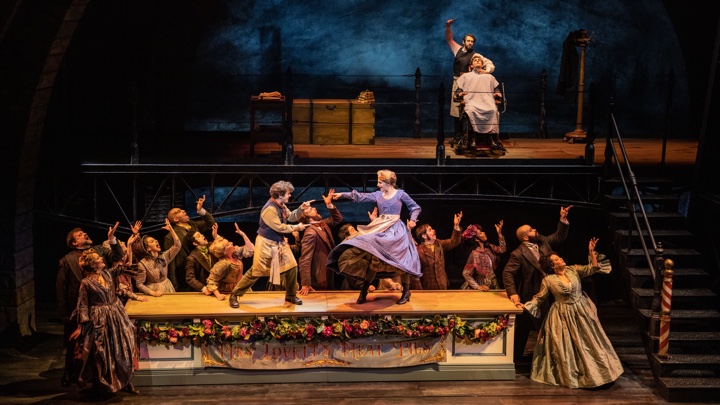
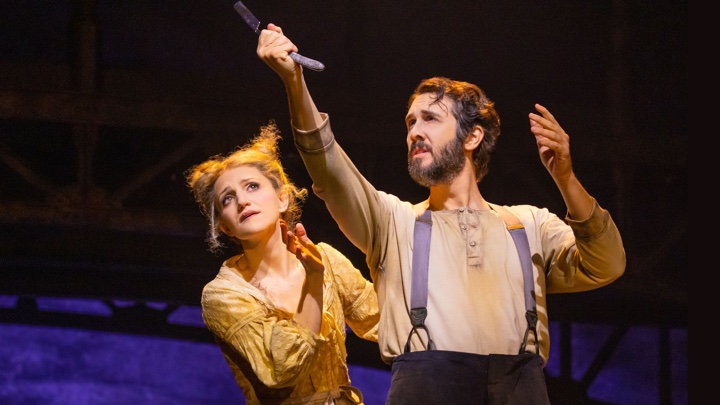
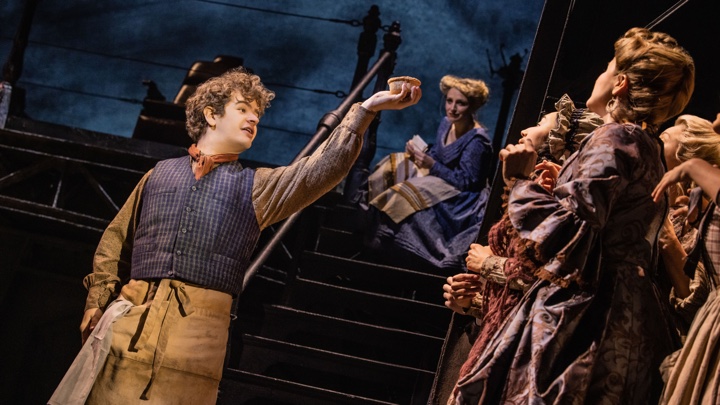
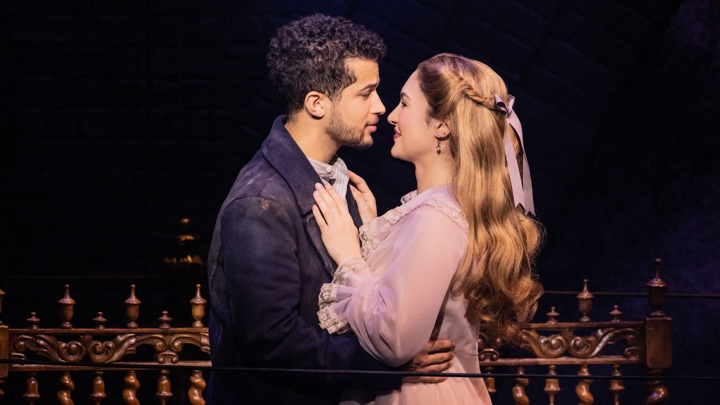











Comments